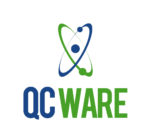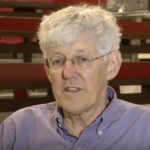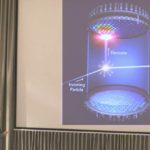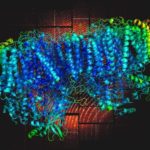By Mike May, on behalf of DEIXIS: Computational Science at the National Laboratories High performance computing (HPC) is only as valuable as the science it produces. To that end, a National Energy Research Scientific Computing Center (NERSC) project at Lawrence Berkeley National Laboratory has been expanding its reach through a superfacility – “an experimental facility […]
QC Ware and SLAC to develop Chemistry Applications for Quantum Computing
Today quantum startup QC Ware announced that the company been awarded a U.S. Department of Energy grant to use quantum computing to better understand complex material and chemical systems. Collaborating with SLAC, QC Ware will apply its expertise to develop hybrid classical-quantum algorithms. These algorithms will run on quantum computers and could dramatically improve the accuracy of photochemical simulations used to design new chemicals and materials.
SLAC Researchers use ESnet for Record Speed Transfer of 1 Petabyte of Data
“The innovative and versatile nature of ESnet’s OSCARS enabled us to design a unique 5000-mile 100 Gbps loop, which our ESnet colleagues quickly helped establish in 2015,” said Zettar Founder and CEO Chin Fang. “We were thus able to have the data storage clusters and the data transfer nodes co-located in the same rack although they were at both ends of the loop. Physically they were separated by inches, but digitally they are separated by 5000miles. Further the clusters themselves have a self-imposed cap of 80 Gbps.”
Big Data over Big Distance: Zettar Moves a Petabyte over 5000 Miles in 29 Hours
Today AIC announced a world-record in data transfer: one petabyte in 29 hours encrypted data transfer, with data integrity checksum unconditionally enabled, over a distance of 5000 miles. The average transfer rate is 75Gbps, or 94% utilization of the available bandwidth of 80Gbps. “Even with massive amounts of data, this test confirmed once more that it’s completely feasible to carry out long distance, fully encrypted and checksum-ed data transfer at nearly the line-rate, over a shared and production network.”
Linac Coherent Laser Source (LCLS-II): Data Transfer Requirements
Les Cottrell from SLAC gave this talk at the Stanford HPC Conference. “Scientists use LCLS to take crisp pictures of atomic motions, watch chemical reactions unfold, probe the properties of materials and explore fundamental processes in living things. The talk will introduce LCLS and LCLS-II with a short video, discuss its data reduction, collection, data transfer needs and current progress in meeting these needs.”
SC17 Invited Talk to Look at Computing with Physics
SC17 continues their series of Session Previews with discussion with Dr. Catherine Graves from HP Labs about her upcoming Invited Talk. “I will present our work implementing a prototype hardware accelerator dot product engine (DPE) for vector-matrix multiplication (VMM). VMM is a bottleneck for many applications, particularly in neural networks, and can be performed in the analog domain using Ohm’s law for multiplication and Kirchoff’s current law for summation.”
Video: Dark Matter – Detecting Gravity’s Hidden Hand
“One of today’s great challenges in physics is to observe individual dark matter particles coming in from the galaxy and striking particles on Earth. This talk presents the evidence for dark matter and introduces one of the most ambitious efforts to discover interactions of dark matter particles, using tons of cryogenic liquid in a deep underground laboratory.”
SLAC & Berkeley Researchers Prepare for Exascale
Researchers at the Department of Energy’s SLAC National Accelerator Laboratory are playing key roles in two recently funded computing projects with the goal of developing cutting-edge scientific applications for future exascale supercomputers that can perform at least a billion billion computing operations per second – 50 to 100 times more than the most powerful supercomputers in the world today.











